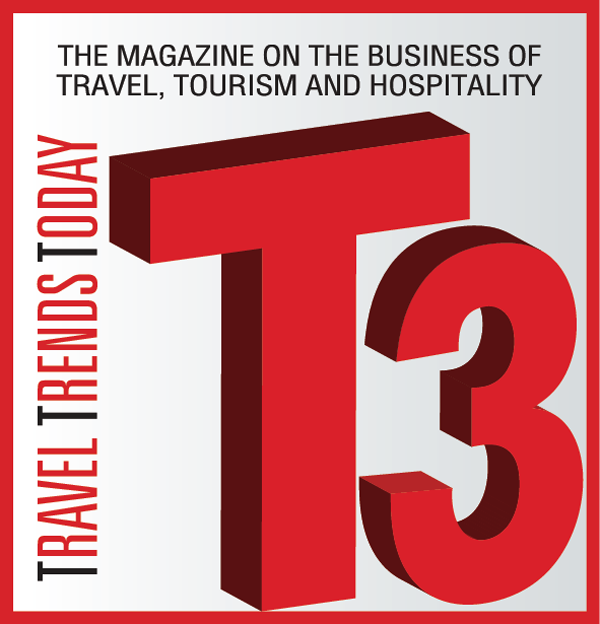HOSPITALITY MAJORS PLAN RAPID EXPANSION IN INDIA
 Representative image
Representative image
Impetus from government’s thrust on simplify policies, rising purchasing power of the domestic traveller, increase in commercial development, expected surge in foreign tourist arrivals and a growing airline industry with the proliferation of low-cost carriers are some of the reasons that are instilling a real sense optimism and an anticipation of change among players of the Indian hospitality industry. However, there do exist real impatience and they are of the opinion that the Government must do the specific things to make the industry more vibrant and resilient. This is due to the fact that the Indian hospitality market still proves to be a complex and at the same time a lucrative marketplace for the hotel companies to maintain their foothold. With the objective of scaling up, the top players have launched extensive expansion plans, not just into the major cities, but also the emerging markets in order to target consumers beyond the commercial segments. The hospitality sector has already begun to see some improvement and expect the trend to get stronger in the coming years. Their hope is based on the better performance of the sector. According to HVS, the nationwide RevPAR performance was recorded at Rs 3,324 in 2014/15, a sound growth of 1.5 per cent over that of the preceding fiscal year. The nationwide weighted occupancy (60.3 per cent) of hotels grew by 3.4 per cent, corresponding with a marginal decline of 1.8 per cent in the weighted average rate (Rs 5,510). Moreover, the World Travel & Tourism Council suggests that the total contribution of travel and tourism to the country’s GDP was 6.7 per cent in 2014 which is projected to grow by 7.5 per cent this year.
Emerging Scenario:
According to Dilip Puri, Managing Director India & Regional Vice President South Asia, Starwood Hotels & Resorts, the slowdown in China has understandably led to a ‘cautious’ sentiment but there is no denying that the India growth story is still positive. “Our GDP at around 7 per cent may be lower than expected, but is still faster than most economies. The government is stable and has the Tourism sector as a key focus area, all positives for the industry,” he said and added that the slow pace of development due to regulatory procedures and infrastructure continues to plague the industry. However, challenges can be opportunities if one remains innovative, he said.
Anil Madhok, Managing Director, Sarovar Hotels &Resorts, also shares the similar sentiments. “In 2014-15, Indian hospitality industry has noted ‘subtle’ yet ‘evident’ recovery in branded hotel business in the country. Nation-wide occupancies have grown almost two percentage points in 2014-15 thus crossing the 60 per cent mark for the first time in four years. Similarly, there was a marginal growth in the nation-wide RevPAR in branded hotels in 2014-15. In spite of the occupancy and RevPAR growth, the Average Room Rates (ARRs) in the hotel industry in India continued to slide giving the industry enough reasons to worry about.” However, Raj Rana, Chief Executive Officer, Carlson Rezidor Hotel Group -South Asia, is confident about a better prospect about the industry. “The Indian hospitality industry, despite making rapid strides in the last decade, still has tremendous potential ahead. There are many positive factors propelling this growth. Broad parameters are still strong; India is a dynamic country with a young population aspiring to experience what India and the world has to offer,” Rana said. He said that the middle class in India is projected to expand to 580 million by 2030 offering a good growth prospect for the sector.
Deepika Arora, Regional Vice President - Eurasia, Wyndham Hotel Group, is in agreement with Rana. “Presently, the demand is less and supply is more in a number of cities. But this may change in future as economic activity is expected to pick up with Government initiatives to improve the economic environment. Hence, Indian hospitality industry can grow at a faster pace in future keeping in mind the larger picture. It has emerged as one of the key growth drivers among the services sector in India,” she said.
Room for Hope
Industry forecast suggests that India needs 190,000 rooms in next 3-4 years. However, Achin Khanna, Managing Director - Consulting & Valuation, HVS - South Asia is not in agreement with this forecast. According to him, the existing rooms supply in the organised hotel market grew by 11 per cent in 2014 -15 over the previous year totaling to 112,284 rooms as of 31 March 2015 which includes 9,588 new openings during the year. As the nationwide active development of supply slowed down in 2014 -15 when compared to the previous fiscal, HVS anticipates a little over 34,000 branded rooms to be developed over the next five years, taking the total supply to 1,46,485 rooms by 2019-20,” Khanna said and added that this is adequate to cater to the requirements of the market.
No doubt, India needs more hotel rooms and players of the industry have already geared up to capitalise on the growth potential of the Indian tourism and hospitality sector. While all these chains are present in metros, they also realised that presence in tier-II &III cities is going to make a good business sense. HVS study suggests that the mid market segment has the highest potential additions to supply, followed by the upscale and budget segments
According to HVS, while Taj Hotels, Resorts and Palaces (including Ginger), ITC Hotels (including Fortune) and Carlson Rezidor Hotel Group remain the top three hotel companies with the largest inventories in the country, 2015 witnessed a shuffle among the other players. “Marriott International has moved to the 4th position, overtaking Starwood Hotels & Resorts, and AccorHotels has surpassed Hyatt Hotels Corporation to assume the 6th rank. Interestingly, InterContinental Hotels Group also edged ahead of both Sarovar Hotels & Resorts and Oberoi Hotels & Resorts to occupy the 8th position,” Khanna added.
Carlson Rezidor has 71 hotels in operation and 45 under development across 45 Indian cities. “We plan to open 5 new hotels in 2015 of which one hotel has already become operational in Goa. By 2017, we envision to have a total portfolio of 143 operating and under development hotels with a goal of 170 hotels by 2020,” Rana revealed. So far, Carlson has signed 8 hotels in India comprising two Radisson Blu hotels in Kochi and Raipur, five Radisson hotels in Goa, Hosur, Dehradun, Gurgaon and Mahabaleshwar and one Country Inn & Suites in Tawang. “Our strategy is to focus on corporate driven markets such as Ahmedabad, Bengaluru, Chennai, Delhi-NCR, Hyderabad, Kolkata, Lucknow, Mumbai and Pune, as well as leisure and religious destinations such as Goa, Jaipur, Katra, Shirdi, Tirupati,” headed. The Group is also broadening its brand presence with the introduction of Radisson Red and the Quorvus Collection.
For Wyndham, India is an important key market. “Today, Wyndham Hotel Group has 25 properties with approximately 2,618 rooms open under the Ramada, Howard Johnson and Days Inn brands in India and 42 properties with approximately 4742 rooms under development. We expect to add at least one more hotel to our operational hotels this year and expect majority of the current development pipeline will be operational by 2017,” Arora said and added that the Group announced 10 new hotels in India in Gurgaon, Darjeeling, Greater Noida, Jaisalmer, Pali, Lonere, Dharmapuri, Bangalore, Chennai and Trivandrum in October 2014. “A majority of these hotels are expected to be open by 2017,” she added. Wyndham is also looking at introducing its global brand Super 8 in India, which will provide a chain of hotels with standard facilities. “We will continue to explore newer locations in tier 2 and 3 markets as these are untapped markets and offer huge potential for the hospitality market,” she added.
Starwood has over 50 operating hotels in South Asia, of which 46 are in India. “By 2015 end, we would have opened 9 hotels this year, 7 of them in India. We have signed 7 new agreements for the region (5 in India) this year. In 2016, we are set to open at least 10 new hotels. So our growth momentum will continue, fueled by openings and new signings,” Puri said and added that Starwood is set to debut W Hotels & Resorts next year in Goa. Starwood already has 7 of its 10 brands in India. “India is the fourth largest market for Starwood Hotels & Resorts and will soon be the third. By 2016, we will have 8 of our 10 hotel brands in the country and by 2017 we hope to bring 9 of our 10 hotel brands in India.” Puri informed. For its luxury brands, Starwood will target the gateway cities and leisure/resort destinations, upper upscale and upscale brands see great traction in tier 2/3 markets. “We have signed agreements and have hotels in cities like Nagpur, Bhopal, Vijayawada, as we see huge potential in these markets. Our upscale brands- Four Points by Sheraton and Aloft are an ideal fit for these new markets,” he added.
Sarovar has also added as many as 6 hotels in its portfolio this year so far in Tirupati, Salem, Vrindavan, Nairobi, Mashobra in Shimla and Thekkady. “The last quarter of this year will see the opening of Crystal Sarovar Premiere, Agra, Kalyan Hometel, Vandalur-Chennai, Classic Sarovar Portico, Dehradun, Sarovar Portico, Thiruvananthapuram. By 2017, we plan to add 15 more hotels to our portfolio,” Madhok revealed.
Business Model :
According to Puri, there is a trend towards various business combinations- mergers, joint ventures, multiple business stakeholders- where one partner owns the asset, another finances and a third manages. This combining of assets, capabilities and talent pools will be a trend that is gaining momentum in hotel development.
Rana informed that Carlson Rezidor’s business model is asset light in real estate and will primarily invest in brand building and revenue generation tools to drive business to our hotels. “However we don’t shy away from investments which are strategic in nature and provide entry with a good value proposition in strategic markets. We have invested in a joint venture with Bestech Hospitalities to develop, with exclusive rights, 49 Park Inn by Radisson hotels over 13 years in North and Central India by 2024,” Rana revealed.
Starwood believes in investment in its people and processes and technology that helps it in operating world-class hotels. “We bring in powerful sales, distribution and loyalty platforms to our hotels and owners. We invest in training our associates and that reflects in our award winning hotels as well as Starwood being a preferred employer in the hospitality sector. While we do not invest in assets, we work with the ‘right owners, right brand, right location’ principle. One of the greatest successes for Starwood has been multiple deals with our existing owners and developers,” Puri said.
Wyndham currently offers franchise model in India. “However, we will continue to look at newer routes to expand such as managing hotels, acquisition of hotel management set ups and brands to accelerate our growth in India,” Arora added.
Regulatory challenges
According to Rana, while fundamentals are strong, no doubt there are macro-economic and regulatory challenges. “From high land prices to funding constraints, the Indian hotel industry has to be resilient to grow. While in the short term, the supply demand imbalance itself is creating in some cities, a downward pressure on rates which results in eroding margins. That said, developers with land parcels in the right locations will come out ahead in the longer term supported by the introduction of REITs in India which provides an alternate source of funding for hotel owners. Hotel owners can now also leverage the initiative of the Indian government to allow 100% FDI investment in the hotel industry. This industry worldwide; is a marathon and not a sprint, and investors need to have stamina for maximizing ROI,” he added.
Puri also believes the same. India is still a under hoteled market with the demand for good quality lodging across tier 1, 2 and 3 cities as well as resort destinations. “One of the key challenges in India remains the slow pace of infrastructure development and rigid regulatory environment. It takes more than twice as long to build a hotel in India than in China. High cost of land, high interest rates, rigid regulation and high taxes are also major challenges. However, Starwood believes in business innovation and working with the right partners,” he said and added that challenges can be opportunities if we have an innovative approach. “Our conversion strategy is development-friendly and has allowed us to bring in smaller, existing hotels, into our system, driving growth,” he added.
Conclusion
According to Khanna, the nation's hotel supply has almost kept pace with the decadal growth in the demand for room nights, and as the economic and political scenarios of the country improve, the demand for quality branded hotels will only increase. “The Indian Hospitality landscape has been witness to green shoots this past year. The recovery has been subtle, yet evident. As future supply tapers, future demand improves and recent entrants stabilise, we are likely to see further growth in the performance of the sector in the months and years ahead. While the overall tone is indeed one of cautious optimism, like last year, our view is that the graph is moving steadily in the right direction,” Khanna added.

